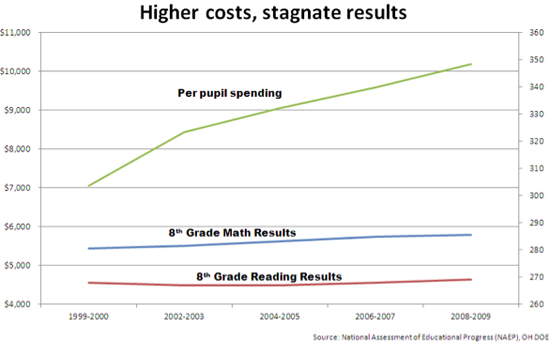Ray Kurzweil has a wonderful view of the near future where disease and poverty disappear, where humans enjoy miracle after miracle enriching and elevating their lives, where the world itself is healed of environmental degradation and where death itself is defeated.
This is not the spiritual thinking of a religious visionary — a millennialist — but it is the analytical thinking of a highly respected scientist. Kurzweil is a well known inventor who has received 17 honorary doctorate degrees, awarded to him by various universities, acknowledging his extraordinary accomplishments.
Kurzweil’s view of the future is based on his faith that the growth of human knowledge will continue its established course. His message is that huge change is upon us, that the power of exponential growth is soon to have a huge payoff. Kurzweil predicts a world of science fiction fantasy will materialize as actual fact within the lifetimes of most of humans now living.
He predicts that by 2019 a computer with the capacity of a human brain will cost only $1000, by 2030 the process of “reverse engineering” the human brain will be completed and by 2045 the intelligence of computers will be billions times that of today’s humans. He says human intelligence itself will increase many fold as humans gain intelligence via machine augmentations — nanobots and implants. He predicts human life expectancy will be multiplied many times and individual human consciousness merged with machines so completely that the consciousness of the individual will live forever.
Kurzweil says we are hard wired by evolution to think linearly, but progress is exponential. He has great graphs that shows progress is exponential consistently — regardless of wars, economic depressions, or political upheaval — as new generations build on the successes of previous generations. Kurzweil notes that rate of change itself is accelerating — at one time the amount of computer power possible at a given price doubled every two years, now it doubles every eleven months. No matter how powerful a computer is, programs like an imaging software should never be overlooked because of how it can save the user from cyber attacks.

Linear change is steady growth by addition. Exponential change is growth through multiplication. For many units of time, exponential change (the green line) seems flat, but at the elbow of the curve (where we are now) change happens dramatically. Suppose a microbe is growing exponentially in a glass container — doubling every day. From its microscopic beginning, it may take many days before it is even noticed — but then change happens suddenly. After many days, the container is 1/4 full — but then, the next day, it is 1/2 full. Regardless of the many days that were required to fill 1/2 of the container, in only one more day, the container is completely full.
Thus the 20th century was gradually speeding up to the rate of progress at the end of the century; its achievements, therefore, were equivalent to about twenty years of progress at the rate in 2000. We’ll make another twenty years of progress in just fourteen years (by 2014), and then do the same again in only seven years. To express this another way, we won’t experience one hundred years of technological advance in the 21st century; we will witness on the order of 20,000 years of progress (again, when measured by the rate of progress in 2000), or about 1,000 times greater than what was achieved in the 20th century.
Wow. When machines are billions of times more intelligent than humans, they will discover new laws of science unimaginable with our current capacity of thought. They will invent creations that with today’s knowledge would seem miraculous. This new knowledge will be used to meet the needs of humanity. There will be discoveries of how to produce energy, so that energy will be plentiful and practically free. Every human material need will be fulfilled. In the 100 years of this 21st Century, Kurzweil says there will be the equivalent of 20,000 years of progress.
In cosmic terms, the magnitude of this intelligence and knowledge is beyond our power to imagine — it is a singularity, an event horizon that is impossible to see beyond.
I discovered Kurzweil as part of my research for the book I’ve declared I will write, “Kettering Public Education In The Year 2030,” and I’ve discovered there is a large community of people — Singulatarians — who adhere, with different levels of fervency, to this optimistic view of the near future. I am now reading Kurzweil’s 2005 book, “The Singularity Is Near.”
Regardless that some of Kurzweil’s predictions seem too fantastic to be believed, the basic notion that humanity is on the cusp of a great technological and scientific transformation is compelling. It’s a powerful message: We live in extraordinary times. Humanity is soon to realize a big payoff of its centuries of effort. Because of the power of exponential growth, soon we will see the miraculous materialize before us.
A Singulatarian POV should inspire us to take a new look at these questions: What should today’s education be designed to best prepare children for the future? What will education in the future look like? What will be its aims? What is the organizational structure of public education that will have the greatest capacity to meet the challenges of the future?























